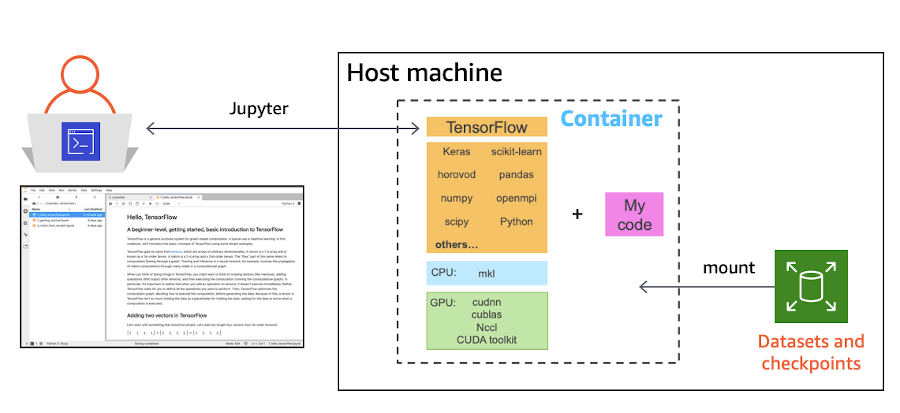AWS Open Source Blog
Category: Amazon EC2
Deploying open source web conferencing solution BigBlueButton on AWS
Major advancements in technology have drastically changed how and where we conduct business. Pushed by the increased number of employees working remotely, the globalization of businesses, and the rise of instant, on-demand communications, technology has had to adapt. For modern and innovative businesses to grow and globalize, building and maintaining quality relationships with partners, suppliers, […]
Getting started with Travis-CI.com on AWS Graviton2
AWS Graviton2 processors deliver a major leap in performance and capabilities over first-generation AWS Graviton processors. They power Amazon Elastic Compute Cloud (Amazon EC2) M6g, C6g, and R6g instances, and their variants with local disk storage. Graviton2-based EC2 instances provide up to 40% better price/performance over comparable current generation x86-based instances for a wide variety […]
OpenShift 4 on AWS Quick Starts
Customers selecting AWS as their preferred cloud have been able to deploy OpenShift through a variety of means. In this post we will explore what has changed in the latest version of OpenShift, and what these changes mean for AWS customers. We also will explore the latest OpenShift on AWS Quick Starts open source project, […]
Announcing the General Availability of Bottlerocket, an open source Linux distribution built to run containers
As our customers increasingly adopt containers to run their workloads, we saw a need for a Linux distribution designed from the ground up to run containers with a focus on security, operations, and manageability at scale. Customers needed an operating system that would give them the ability to manage thousands of hosts running containers with […]
Building resilient services at Prime Video with chaos engineering
Large-scale distributed software systems are composed of several individual sub-systems—such as CDNs, load balancers, and databases—and their interactions. These interactions sometimes have unpredictable outcomes caused by unforeseen turbulent events (for example, a network failure). These events can lead to system-wide failures. Chaos engineering is the discipline of experimenting on a distributed system to build confidence […]
Continuous delivery with server-side Swift on Amazon Linux 2
In January, I published an article describing how to use AWS tools to build, test, and release server-side Swift code on two platforms: Amazon Elastic Container Service (Amazon ECS) and Elastic Compute Cloud (Amazon EC2) running Ubuntu Linux. Recently Swift.org has released official support for the Amazon Linux 2 operating system. This article is a […]
Deploy, track, and roll back RDS database code changes using open source tools Liquibase and Jenkins
Customers across industries and verticals deal with relational database code deployment. In most cases, developers rely on database administrators (DBAs) to perform the database code deployment. This works well when the number of databases and the amount of database code changes are low. As organizations scale, however, they deal with different database engines—including Oracle, SQL […]
Machine learning with AutoGluon, an open source AutoML library
If you work in data science, you might think that the hardest thing about machine learning is not knowing when you’ll be done. You start with a problem, a dataset, and an idea about how to solve it, but you never know whether your approach is going to work until later, after you’ve wasted time. […]
Getting started with Jitsi, an open source web conferencing solution
Teams across the world are looking for solutions that help them to work and collaborate online in these unprecedented times. There are many options that customers have, so this post will help provide you with some options if you are looking. Many teams choose to use managed solutions to enable collaboration. If your business needs […]
Why use Docker containers for machine learning development?
I like prototyping on my laptop, as much as the next person. When I want to collaborate, I push my code to GitHub and invite collaborators. And when I want to run experiments and need more compute power, I rent CPU and GPU instances in the cloud, copy my code and dependencies over, and run […]






